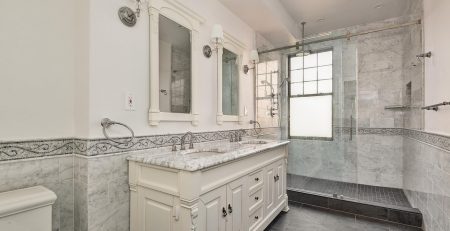How to Keep Your Pipes from Freezing This Winter: A General Contractor’s Guide
As temperatures drop, the risk of frozen pipes increases. Frozen pipes can lead to costly repairs, water damage, and major headaches. As a general contractor, I’ve seen firsthand how homeowners can avoid these issues with some simple preventative measures. Here’s how you can keep your plumbing safe this winter.
1. Insulate Your Pipes
One of the best ways to prevent freezing is to insulate your pipes, especially those in unheated areas like basements, attics, and crawl spaces. Use foam pipe insulation, heat tape, or fiberglass wrap to add a protective layer. This helps retain heat and keeps the cold air out.
2. Keep a Slow Drip of Water Running
When temperatures dip below freezing, allow your faucets to drip slightly. Running water is less likely to freeze, so keeping a small, steady stream flowing can prevent ice blockages. Focus on pipes along exterior walls or in colder parts of your home.
3. Maintain a Consistent Indoor Temperature
Never set your thermostat below 55°F, even when you’re away. Keeping your home at a steady temperature helps prevent pipes from reaching the freezing point. If you’re traveling, ask a neighbor or friend to check in on your house periodically.
4. Seal Drafts and Leaks
Cold air can seep into your home through cracks and gaps in doors, windows, and walls. Use weatherstripping, caulking, or expanding foam insulation to seal any openings that might expose your pipes to frigid temperatures.
5. Open Cabinet Doors
If you have pipes under sinks or cabinets, open the doors to allow warm air to circulate around them. This is particularly useful for kitchen and bathroom sinks located on exterior walls.
6. Disconnect Outdoor Hoses and Shut Off Exterior Faucets
Drain and store your garden hoses before winter sets in. Shut off the water supply to outdoor faucets and use insulated covers to protect them. This prevents remaining water from freezing and expanding, leading to burst pipes.
7. Install Heat Tape or Heating Cables
Consider using heat tape or electric heating cables for pipes that are especially vulnerable to freezing. These products provide direct warmth to the pipes and can be a lifesaver in frigid climates. Just make sure to follow manufacturer instructions to avoid overheating or electrical issues.
8. Know How to Shut Off Your Water
Knowing where your main water shut-off valve is located can prevent excessive water damage if a pipe does freeze and burst. Test the valve ahead of time to ensure it’s functioning correctly.
9. Invest in a Smart Thermostat or Temperature Sensors
A smart thermostat can keep your home at a consistent temperature, even when you’re away. Additionally, temperature sensors in vulnerable areas (like basements and attics) can alert you if the temperature drops too low, giving you time to act before pipes freeze.
10. Act Fast If You Suspect a Frozen Pipe
If you turn on a faucet and only a trickle of water comes out, you may have a frozen pipe. Try warming it with a hair dryer, space heater, or warm towels—never use an open flame. If you can’t locate or safely thaw the pipe, call a plumber immediately to prevent bursting.
Preventing frozen pipes is all about preparation. A little effort now can save you from costly repairs and water damage later. You can keep your plumbing in great shape all winter by insulating pipes, maintaining a warm home, and taking proactive steps.
If you need help winterizing your home, contact a trusted general contractor or plumber for expert assistance. Stay warm, and keep those pipes flowing smoothly!








